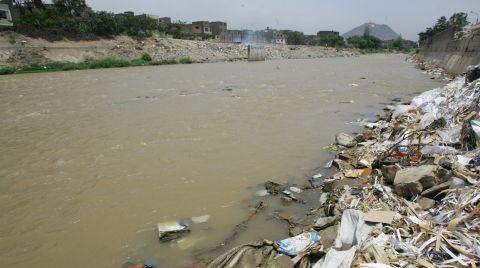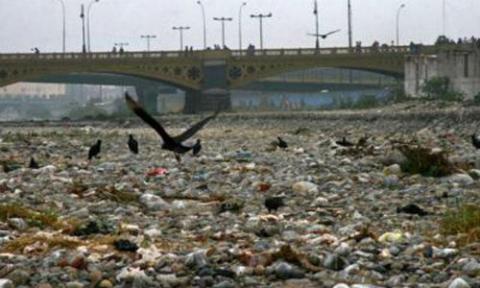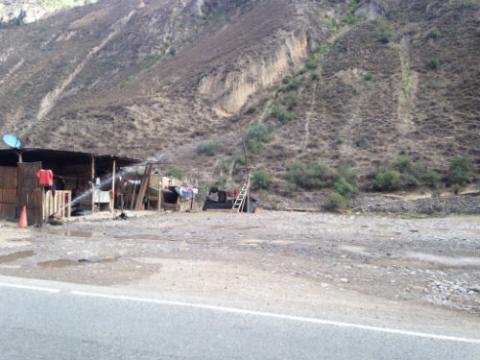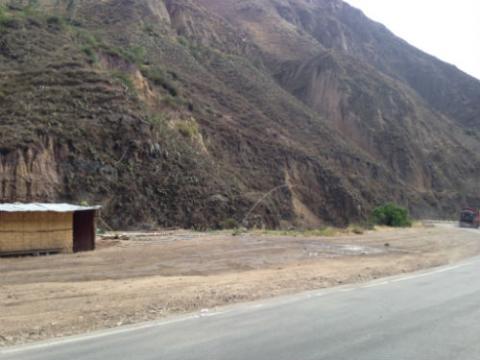By María José Veramendi Villa, senior lawyer AIDA, @MaJoVeramendi 
Are 4:00 am It's a weekend of national holidays. We leave Lima, Peru, bound for the city of Oxapampa, in the high jungle department of Pasco. have not even two hours and traffic on the Central Highway stops completely. After talking with drivers from neighboring cars, we learn that two trucks collided on a curve and load one of them was watered down the road. We can not happen.
The hours pass and desperation grows. At this point I'll spare you the anecdotes about the lack of road safety education of my compatriots. It would take me at least 10 entries in this blog. I will summarize by saying: ZERO respect for others!
The Storyteller polluted river
 We were standing about five hours on the road, in the valley of the Rimac River , whose name in Quechua means talkative. Its flow down from the Andes , runs through the valley, the city of Lima, Callao and empties into the Pacific Ocean . It is one of the three river basins that supply water to the nearly 9 million inhabitants of the desert metropolitan Lima.
We were standing about five hours on the road, in the valley of the Rimac River , whose name in Quechua means talkative. Its flow down from the Andes , runs through the valley, the city of Lima, Callao and empties into the Pacific Ocean . It is one of the three river basins that supply water to the nearly 9 million inhabitants of the desert metropolitan Lima.
However, Rimac water that reaches the treatment plant Potable Water and Sewerage Lima (Sedapal) is highly contaminated by various sources: discharge of industrial wastewater, domestic and irrigation; Environmental passives; and solid waste dumps, among others.
The gravity of the situation is such that since August 2013, increased by 53% SEDAPAL budget of chemical inputs to purify the river water. In a statement on 1 August 2014 a representative of that entity indicated that "e l problem of pollution is increasing" .
Lima is left without water
As you can imagine, five hours in traffic allow you several moments of reflection. Between sleep and boredom, they caught my attention the washes cars and trucks . Although it is something I had already noticed on previous trips to La Oroya, spare time made me watch him carefully.
These sinks were installed as improvised on one side of the road, on the banks of the Rimac. The most interesting, surprising and outrageous of them (see photos) is that they are a source of wasted water . River are supplied through hoses or pipes with sprinklers that NEVER close. The worst thing is not about one or two laundry rooms. They are at least 20 that are located along the road, throwing water constantly and without control . I doubt that these businesses clandestine reach their monthly water bill.
It is ironic that occur this kind of thing in full view of the authorities in a city like Lima: so vulnerable to the effects of climate change , where more than one million people have no water connection, where another million live with rationed water and more than a million and a half does not drain connection [1] , and where the availability and access to water are dwindling . If the situation I have described has not been regulated, where the audit is?
 My journey ended 16 hours later with many questions about what we are doing to solve such basic problems as waste without water control .
My journey ended 16 hours later with many questions about what we are doing to solve such basic problems as waste without water control .
Recall that in December Peru will be the great host of the Conference of States Parties to the United Nations Framework Convention on Climate Change . It is hoped to move there in consensus towards a new binding agreement to reduce emissions, but also want this to generate awareness in the authorities regarding specific actions to take care of our water resources and properly oversee its misuse .
I hope that within a few decades will not have to wonder what happened to our Rimac River ...
[1] Municipality of Lima. Lima strategy Adaptation to Climate Change. View: http://www.ciudad.org.pe/talleres/2012-07/pptestrategiasCC04juliov2.pdf